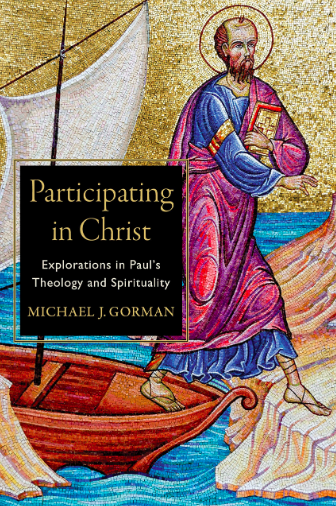 Who is the most influential American theologian of the 20th Century? In some circles the name Charles Hodge (Princeton) or BB Warfield would immediately be mentioned, though Hodge is a 19th Century theologian with a 20th Century influence. Others might say Walter Rauschenbusch, but in his book The Journey of Modern Theology, Roger Olson probably gets it right with this:
Who is the most influential American theologian of the 20th Century? In some circles the name Charles Hodge (Princeton) or BB Warfield would immediately be mentioned, though Hodge is a 19th Century theologian with a 20th Century influence. Others might say Walter Rauschenbusch, but in his book The Journey of Modern Theology, Roger Olson probably gets it right with this:
If asked to name America’s most influential twentieth-century Christian theologian virtually every historian and theologian would name Reinhold Niebuhr. He never regarded himself as a theologian and never earned a doctoral degree in theology. And yet, during his lifetime he was recognized as one of the leading American public intellectuals. A decade after his death n 1971 a leading theologian declared, “It is difficult to find a theologian in the twentieth century who has exerted more influence on a nation’s political life than has Reinhold Niebuhr.” … So influential was Niebuhr that his face graced the cover of Time magazine’s twenty-fifth anniversary issue (March 8,1948); the issue contained a lengthy article about the prophet of Christian realism.
Niebuhr has often been called America’s version of neo-orthodoxy but Niebuhr did not see himself that way because he thought the neo-orthodox made themselves irrelevant to social problems because they were obsessed with fighting liberal theology while formulating systematic theology — which is precisely the criticism Barth made of Bonhoeffer at times. Olson, however, thinks neo-orthodoxy is the right label or place to being seeing Niebuhr. Like the others, he fought liberal theology and was influenced by Kierkegaard.
So what is this Christian realism? Olson’s sketch includes includes discussions of the following:
1. Niebuhr rises to prominence as a Christian ethicist. Like Rauschenbusch, a pastorate confronting social and economic problems provoked a new kind of theological reflection and Olson says, “he began to favor a form of socialism as the only solution to the poverty and powerlessness of America’s wonders” (347). He himself did become disillusioned with the social gospel’s optimism and pacifism, but he was especially disillusioned with their weak views of human sinfulness and God’s transcendence. In short, the liberal theology of his Yale MDiv was inadequate for the task. His realism entailed a defense of going to war against National Socialism in Germany against liberalism’s much less, at times pacifists, stance.
Most liberal Protestant pastors of America condemned all wars as unjust, inclining toward pacifism by appeal to Jesus’ Sermon on the Mount. For them, the kingdom of God was a possibility within history, something Niebuhr came to deny as an illusion. Niebuhr wrestled with his liberal heritage in terms of the tension between the ideal and the real, a tension he found central to the biblical message. How do the realities of life in the present, tainted as they are by sin and evil, fit together with the ideal of the kingdom of God? Niebuhr found the liberal answer naive, ill-advised and unworkable in the face of the threat of totalitarianism. In its place he sought to bring the biblical gospel to bear on the specific situations in which he found himself and thereby to discover how to apply that gospel to Western civilization as a whole (349).
2. Niebuhr searches for a practical Christianity. He wanted to know how to address the contemporary real world with a Christian gospel. His focus was the public sector — the real political and common problems.
As a part of his social consciousness and prophetic criticism, Niebuhr engaged in a kind of Christian apologetics. He attempted to demonstrate the relevance of biblical Christianity to a society that had largely rejected the gospel, or, in his words, he was interested “in the defense and justification of the Christian faith in a secular society (350).
This is not proof of God or proof of resurrection apologetics, but the meaningfulness of Christianity to real world problems. In fact, he allowed a nonrationality to Christianity’s main concepts. He opposed naturalism and idealism with realism. What are they?
Naturalism is the belief that nature is all there is; it reduces humans to highly evolved animals. Idealism is the belief that humans have infinite potential because there is continuity between human mind or spirit and God or ultimate reality. It elevates humans to godlets (351).
So, he tirelessly attacked the two basic tenets of the modern faith of liberalism: the idea of progress and the idea of human perfectlbility (352).
Olson is right; liberals saw him as pessimistic.
Niebuhr saw the Sermon on the Mount of Jesus as a “counsel of perfection” and “something impossible to live perfectly in this fallen, sinful world” — and while no one thinks we can live it perfectly, the issue for Christian interpretation is whether or not we are called to live this way, and to live this way in community with one another. Any attempt, as has often been the case, to make Bonhoeffer Germany’s version of a Niebuhrian realist is shattered by comparing how these two examine the Sermon on the Mount.
3. Niebuhr develops a Christian anthropology. This is the core of Niebuhr’s theological ethics. Liberals made the problem education. So how did he view humans?
First, human persons are created and finite in both body and spirit. Second, humans are to be understood first and foremost from their standpoint in relation to God, that is, as created in God’s image, rather than in terms of their rational faculties or in relation to nature. In other words, the meaning of human life is in God, not self or world. Third, humans are sinners and because of sin they are to be loved but never trusted (353).
[Here is one of his great lines of thinking:] The fundamental nature of original sin, the sin that underlies our individual transgressions, is refusal of creatureliness: in other words, idolatry of self (354).
The issue then is not some flaw but responsible choice. And thus freedom and “responsibility” becomes a major theme in him.
4. Niebuhr defends Christian realism against liberal idealism. Like Barth, Niebuhr famously opposed liberal theology. Kingdom theology is at work here:
Furthermore, liberal theologians had thought that the kingdom of God, which Rauschenbusch had identified as society organized according to love, could be brought about by peaceful persuasion without conflict or coercion. Against this liberal idealism Niebuhr advocated Christian realism, the idea that sinful human beings cannot bring about God’s kingdom or even achieve anything perfect, but they can with God’s help approximate God’s kingdom in partial achievements of justice (356).
[His thesis, then, is this:] In An Interpretation of Christian Ethics Niebuhr set forth the thesis at the heart of Christian realism: “love may be the motive of social action [but] justice must be the instrument of love in a world in which self-interest is bound to defy the canons of love on every level.”… The grace of God makes love a possibility; the sinful condition makes it an impossibility (356).
The impossible possibility; Jesus offers an ethic impossible in our world. “The kingdom of God, the rule of perfect love, is an ideal that is always coming but never arriving, at least not by human social work. It is eschatological to the core—a future condition that pulls us toward itself and that qualifies all our partial accomplishments in social ethics…. We sinners need an impossible ideal to tell us we still have far to go” (358).
What we can achieve is justice or something close to it. So he was seeking for a third way: not socialism but restraint on free enterprise.
5. Niebuhr emphasizes God’s transcendence and the realism of Christian symbols. Niebuhr’s theology is not always easy to discern. He affirmed God’s transcendence and atonement, both symbols. Not quite like Bultmann’s concept of myth but approaching it. Transcendence is seen in God over history, in Christ and in the kingdom as the impossible ideal. The cross, too, was a fundamental symbol. It reveals the profound truth about human realities. It is judgment on sin and the message of love and forgiveness.















